Welcome to Houston, Where Lunar New Year Is for Everyone
In this underrated food city, a new generation of chefs is innovating on holiday tradition with caramelized pork belly, crispy spring rolls, and a prosperity-filled salad.
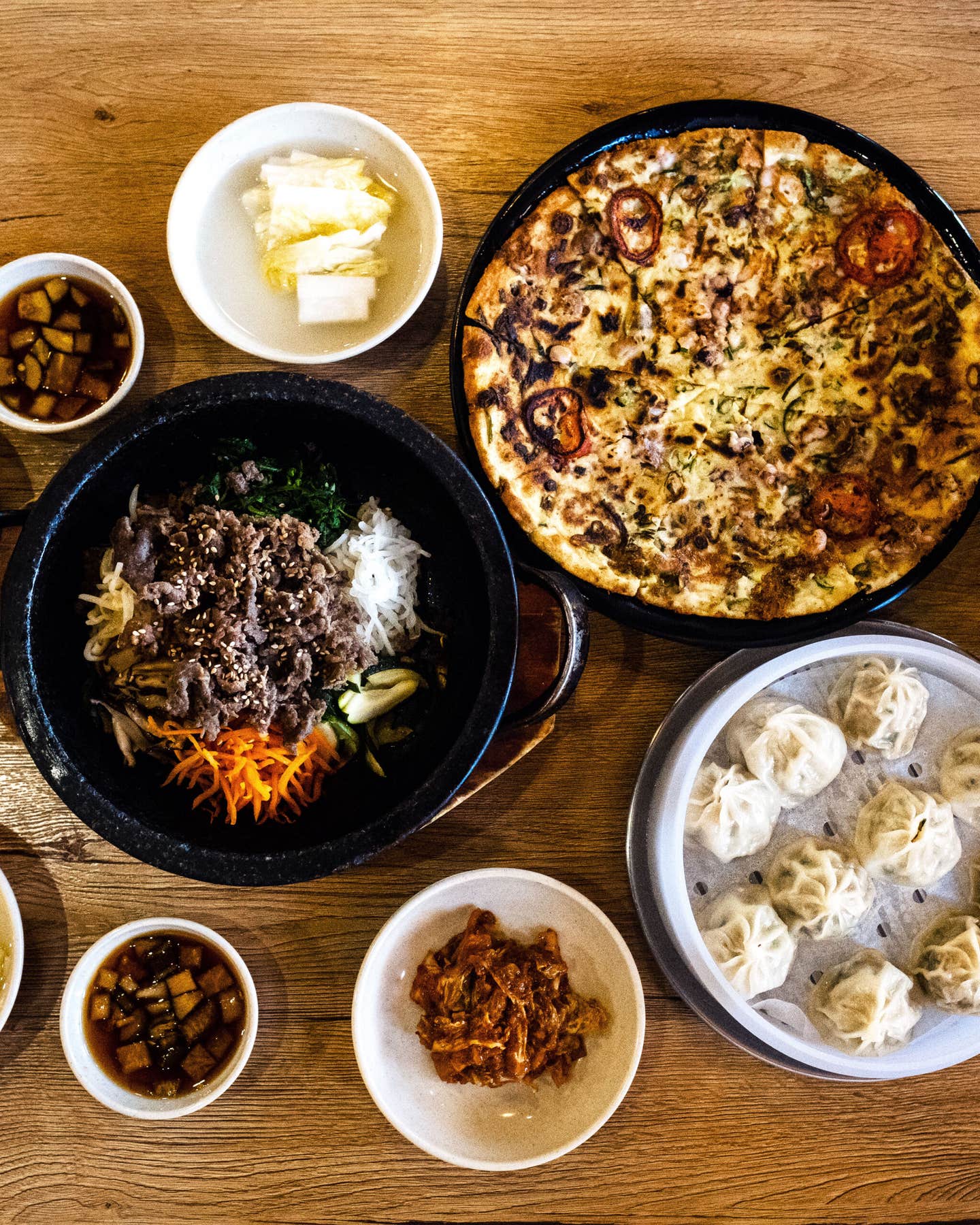
A bowl of thịt kho trứng crackles on the table at the Houston restaurant Xin Chào, steam rising from the hot stone bowl that cradles the fatty braised pork belly and crispy rice. “Ah, it smells like childhood,” longtime Houstonian Stevie Vu tells me while spooning golden-brown grains from the bottom of the still-sizzling pot. Xin Chào’s chef and owner Christine Ha beams and lifts her own spoon. “Can I dig in for some?” she says, dishing a caramelly bite of pork onto her plate. Though Ha, who won the third season of MasterChef, has tasted this Vietnamese dish countless times—her late mother’s version as a child, and now her own, served in a non-traditional vessel inspired by her husband’s Korean heritage—it never ceases to take her back to her childhood.
In a place like Houston, I imagine food memories must flood the atmosphere for many Asian immigrants. On the handful of occasions I’ve visited the Bayou City, the density and breadth of its Asian dining scene has stunned and dazzled me every time—from Bellaire Boulevard, the main artery of a massive six-square-mile Chinatown; to Saigon-Houston Plaza, anchoring a vibrant Vietnamese community; to the Spring Branch suburb, home to a thriving Koreatown district. Houston is, after all, the fourth most populated city in the country, and nearly one in four residents were born outside of the U.S. Over the past century, waves of immigrants and refugees have settled down here—some fleeing dangerous circumstances back home, like Vietnamese people who arrived after the fall of Saigon; some drawn by work opportunities; others attracted by the affordable cost of living and warm climate. These influxes have helped the sprawling port city become the most diverse metropolitan area in the nation, giving rise to a mind-bogglingly multicultural food scene that Ha, a longtime Houstonian, has long appreciated. “I really feel like Houston knows flavor,” she muses. “Diversity in the demographics here translates to diversity in the food.”
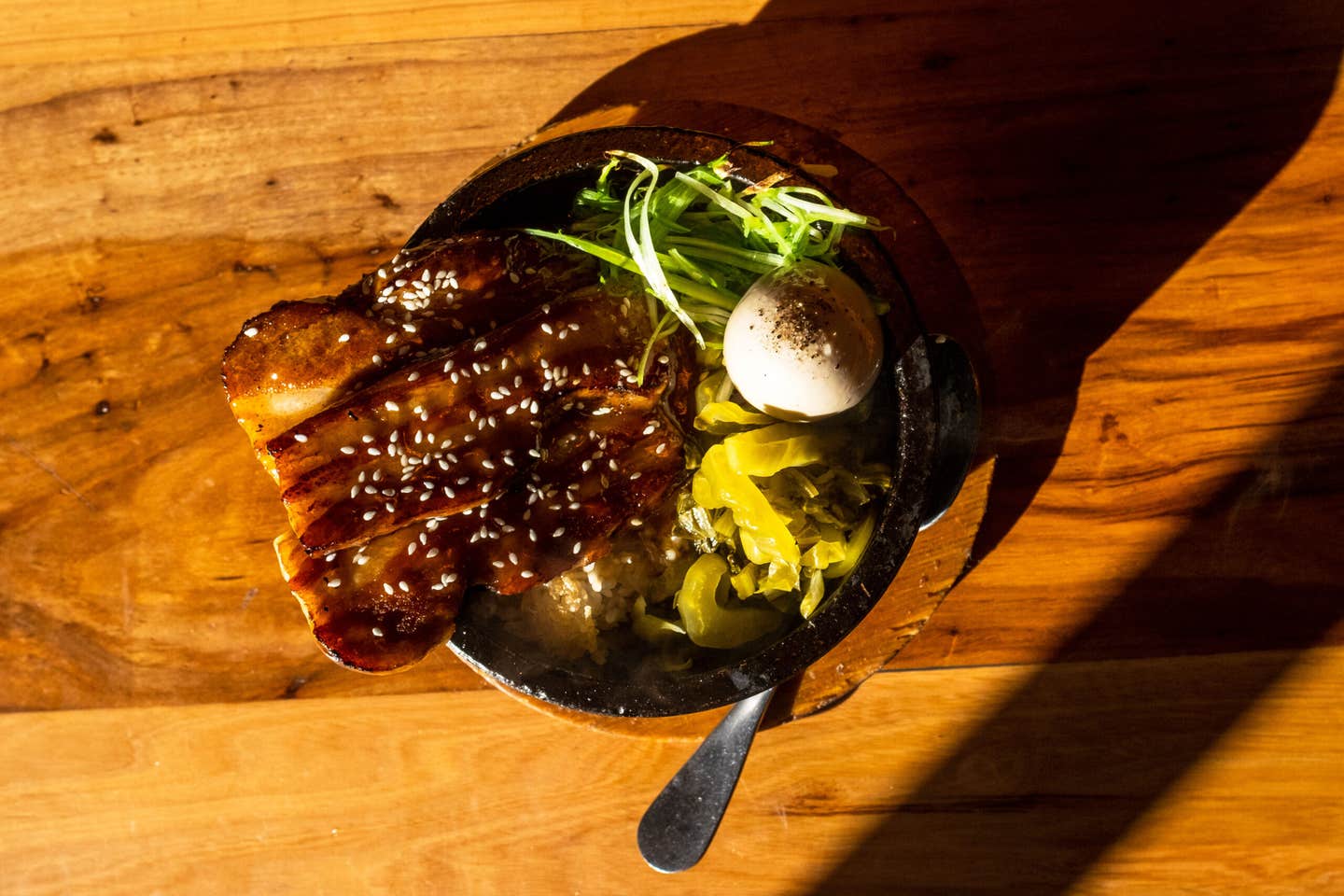
That diversity is only growing. In fact, locals are increasingly referring to the Asian enclaves in Southwest Houston more broadly as Asiatown, to acknowledge how deeply multinationality and cultural exchange are shaping the dining scene—and that’s exactly why I’ve come to the city to ring in the Lunar New Year. The joyous festival is observed across many Asian cultures, with families preparing all kinds of celebratory and auspicious foods to invite good fortune for the new year. An Asian restaurant scene as diverse as Houston’s, I figure, is bound to offer a window into delicious cultural deviations.
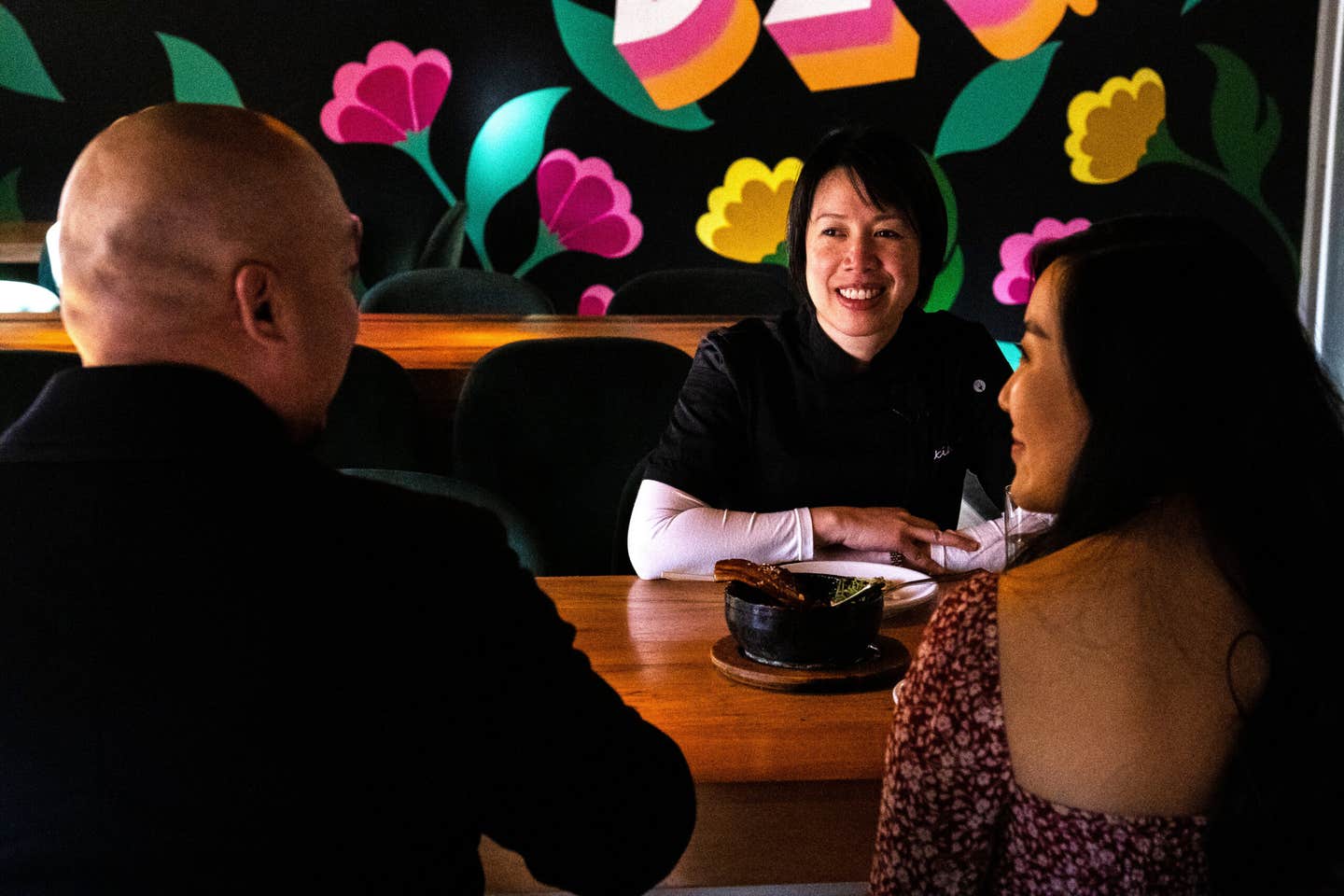
To navigate the holiday-themed specialties, I join Vu, director of operations for the Asia Society Texas Center, and his longtime friend Terry Wong, co-owner of the beloved Bellaire eatery Blood Bros. BBQ, as they visit their restaurateur friends around Houston and wish them a prosperous new year. The two are among the biggest advocates of the city’s Asian-owned restaurants. In early 2020, the duo teamed up to launch Chow Down in Chinatown, an active Facebook page dedicated to promoting the area’s Asian-run businesses and combating prejudice and stigma. Its 25,000 members regularly post mouth-watering pictures of meals they enjoy around Asiatown.
For Wong, the seeds of his love for the city’s Asian dining were planted long ago, when he was growing up in the suburb of Alief. He regularly hung out at the restaurants his friends’ families owned, he and his pals bouncing from spot to spot snacking on different Asian dishes. Since then, the diversity of the culinary offerings has flourished, with a new generation of chefs and owners adding their own signatures to the mix.
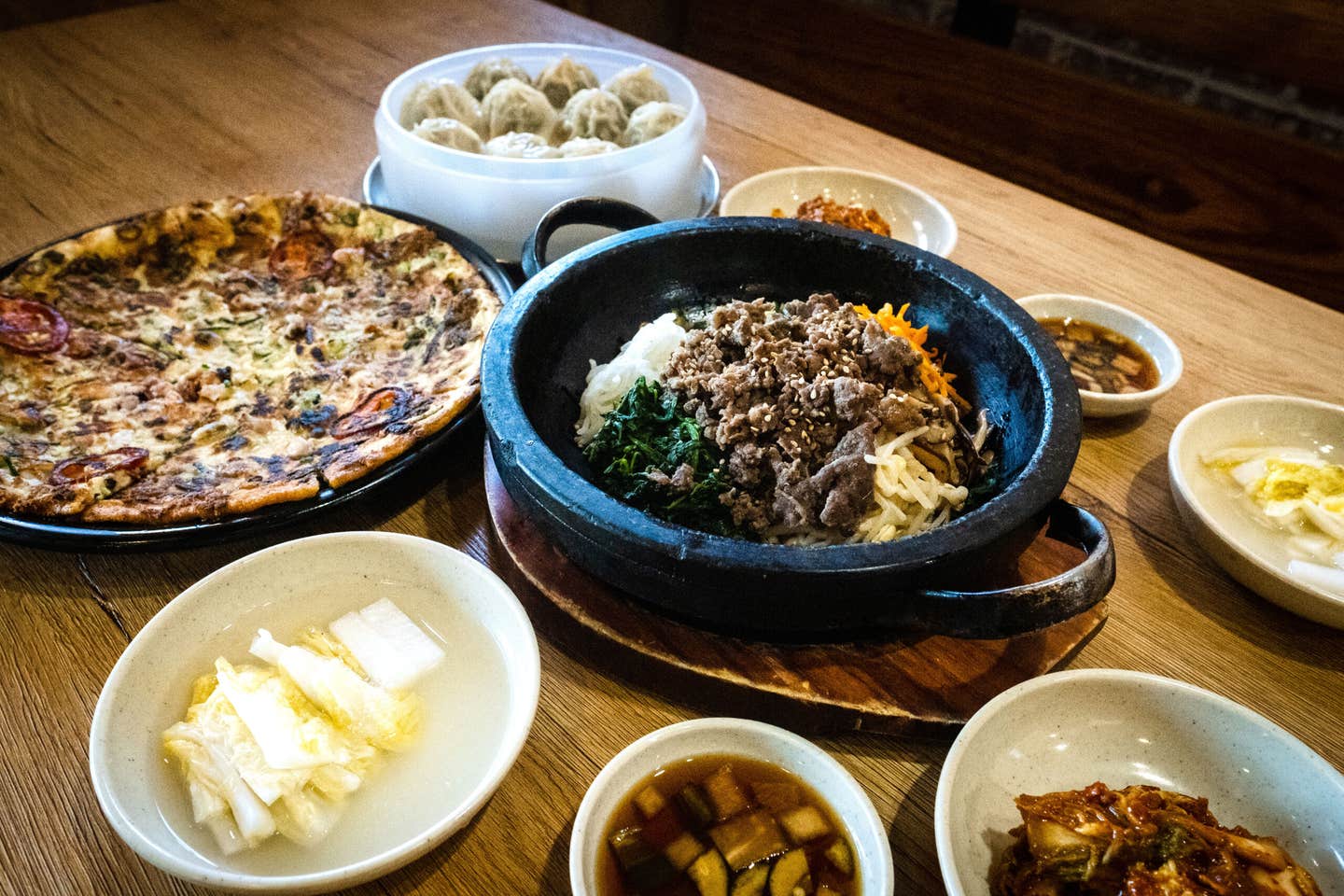
The Los Angeles restaurant MDK Noodles opened its first Texas location two years ago in Houston’s Sterling Square shopping plaza. Stacey Shin, who was born and raised in L.A. and whose father owns the original California location, trained there for a few years before venturing east to expand the eatery into the South. One of the restaurant’s best-loved orders is tteokguk, or rice cake soup, a new-year must-have. “Colors mean a lot in Korean culture,” Shin explains while ladling us helpings of snow-white cakes bobbing in broth. The hue, she explains, symbolizes fresh starts and new beginnings for the Lunar New Year, which Koreans refer to as Seollal. “You’re getting a clean slate,” she says.
As Shin looks ahead to the new year in anticipation of the restaurant’s expansion (she’s soon launching an Austin location), she’s also taking stock of her family’s journey thus far. As the second generation to run the restaurant, she often thinks of the small noodle shop her father and uncle once ran together in Myeong-dong, a busy shopping district in Seoul. “We started from humble beginnings,” Shin explains. Their eatery eventually became a community gathering place, where even those who were homeless could receive a warm meal. “I feel like chicken soup, throughout all cultures, it’s kind of representative of home,” she adds. After her father immigrated to America, he opened his own business, naming it MDK Noodles as a nod to his sibling (the MD stands for Myeong-dong), which has since become a popular Koreatown fixture. Though Shin’s parents collaborated well in jointly operating the restaurant, they didn’t work out as a married couple; after they divorced, Shin’s mother moved to Texas, where she found a vibrant Korean community that welcomed her more than she felt Los Angeles ever had. Now, Shin lives here, too, slinging rice cakes, noodles, and dumplings alongside her mother to build up the family business in the Lone Star State. Shin hopes MDK Noodles in the South will carry on her uncle’s and father’s legacies by becoming inclusive gathering places for the community.

It seems to be par for the course in Houston for not only new restaurants but entire dining enclaves to pop up regularly. Bellaire Food Street, a plaza housing modern eateries like the Malaysian restaurant PappaRich, Japanese franchise Pepper Lunch, and shareable stir-fry spot Chongqing Chicken Pot, became Asiatown’s newest strip when it began welcoming diners in 2019. A few years ago, the western suburb of Katy built an entire Asian Town of its own; it now boasts a colossal 100,000-square-foot H-Mart Korean supermarket, food and karaoke at Soju 101, and Malaysian and Singaporean street food at Phat Eatery helmed by Malaysian-born, Hong Kong-raised chef Alex Au-Yeung. Every year, the James Beard Award semifinalist goes all out for Lunar New Year.
Wong, Vu, and I arrive at Au-Yeung’s restaurant shortly after 1 p.m. to find crowds of expectant diners waiting by the entrance for a table. Before long, Wong and Vu are chatting with some familiar faces they’ve spotted in the crowd. “Houston is really big and really small at the same time,” says Vu, explaining that many people who work in or with the city’s Asian-owned restaurants know each other. When Au-Yeung appears behind the bar to say hello, I point out the stunning decor: delicate paper lanterns and lucky red envelopes. “The feast of the year is Chinese New Year,” he says—so of course, pulling out all the stops is a must.
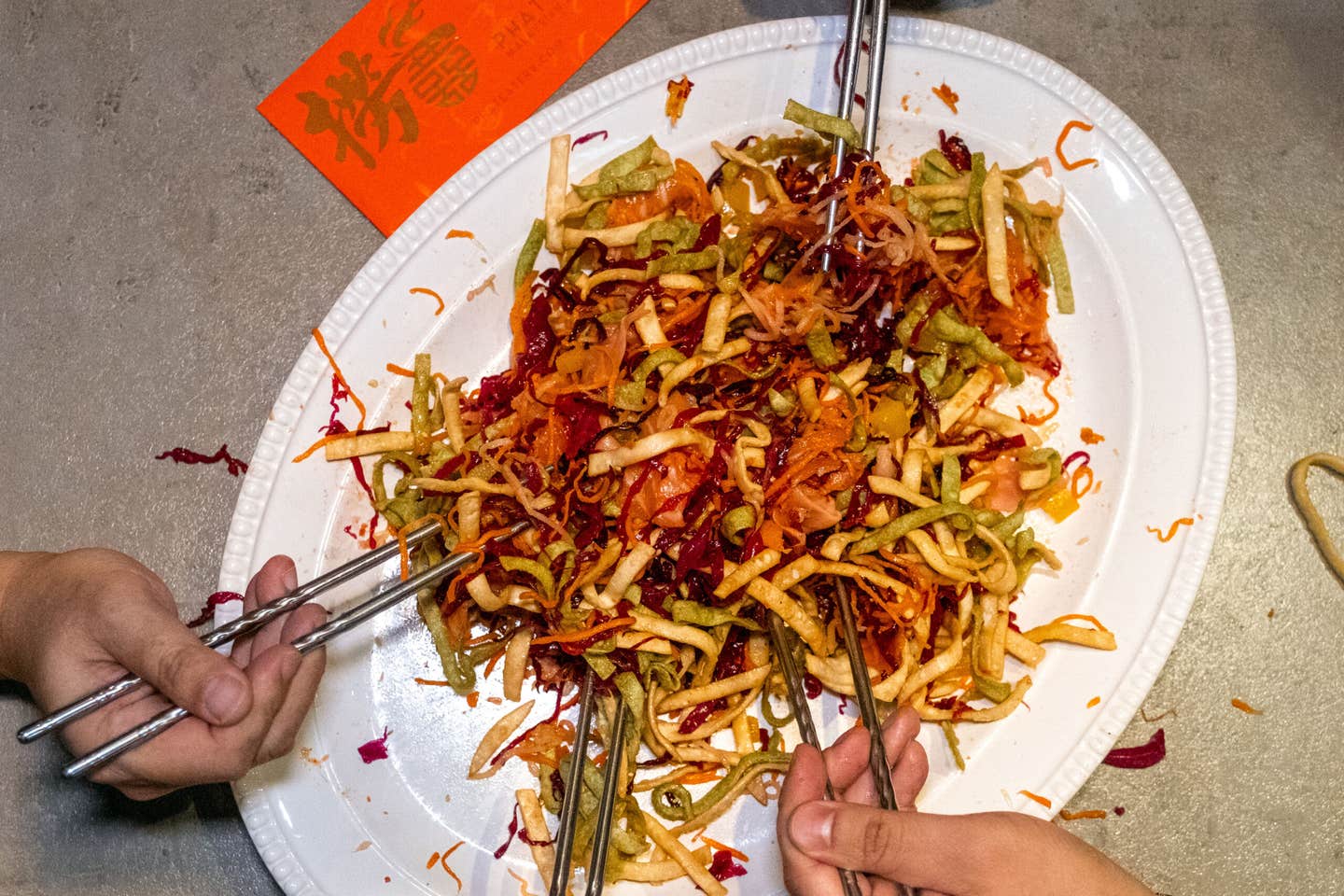
In Au-Yeung’s native Malaysia and its neighboring Singapore, the holiday banquet isn’t complete without a massive platter of yu sheng, or yee sang, also known as prosperity toss salad, a dish I’ve never seen in the U.S. before. The name translates literally as “raw fish,” which refers to the recipe’s star ingredient, salmon. In Chinese, the pronunciation of the word fish makes it a homophone for a word that means surplus or abundance—which is why fish is a holiday necessity in Chinese culture. Every ingredient in the salad symbolizes a favorable wish for the new year: According to Au-Yeung, the sweet chile sauce represents affectionate and enduring bonds among loved ones, the ginger symbolizes health and longevity, and the fried wonton strips invite wealth and prosperity. During the Lunar New Year banquet, the custom is to gather everyone, chopsticks in hand, to toss the salad together. The higher the salad is tossed, the more good luck and fortune the new year will bring.
Like much of Malaysian and Singaporean cuisine, Au-Yeung’s yu sheng draws influence from other Asian countries, apparent in ingredients like the Japanese-style seaweed salad some cooks like to include. Wong and Vu say that cultural exchange similar to what shaped those cultures’ food traditions is thriving in Houston thanks to the city’s vast community of restaurant owners and customers from wide-ranging backgrounds. “‘Have you ever tried it with this?’” says Vu. “‘No, that sounds like a great idea!’”
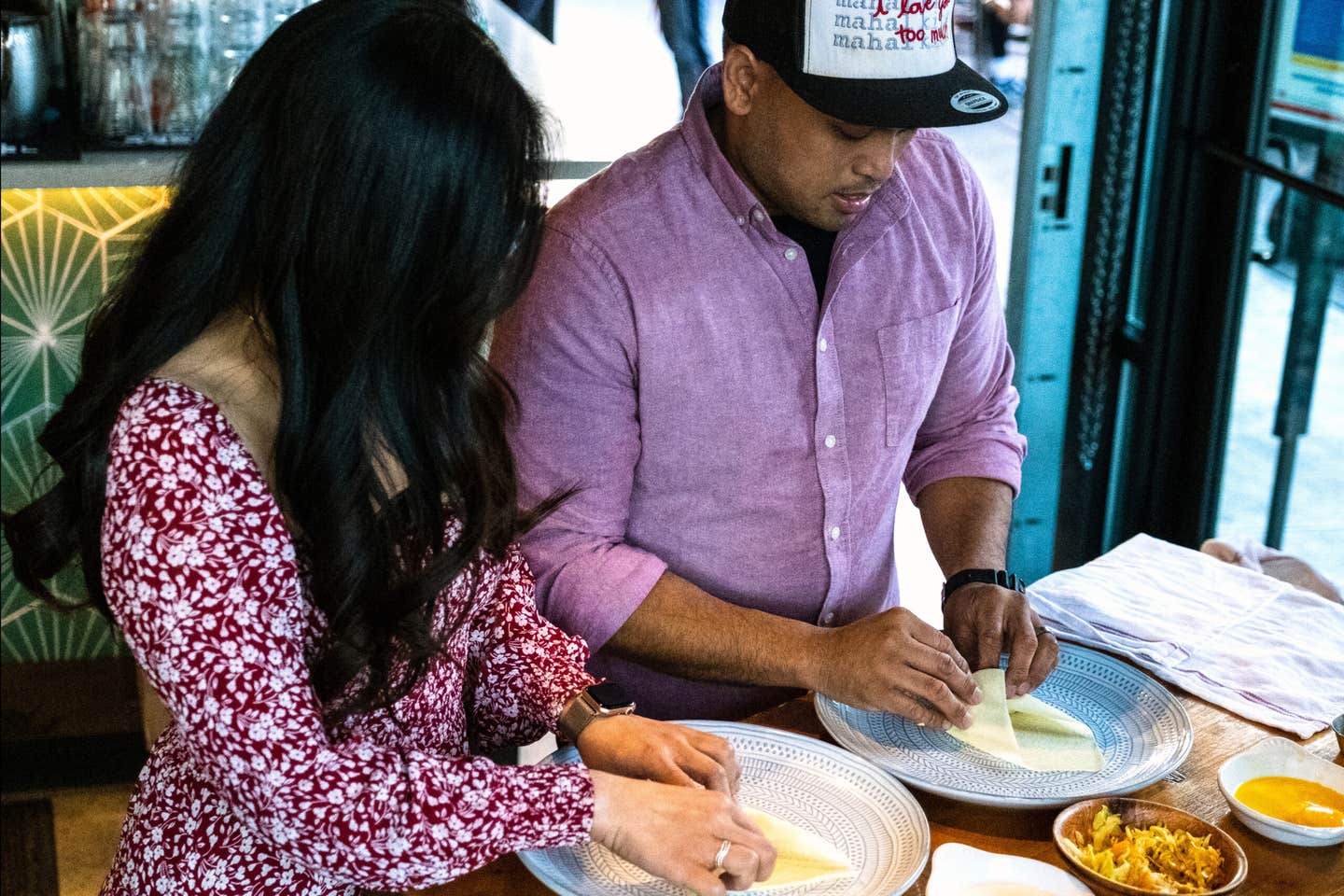
Giovan Cuchapin loves that about his hometown. The born-and-bred Houstonian and co-owner of the Filipino restaurant Be More Pacific originally launched the eatery as a food truck and then brick-and-mortar restaurant in Austin, where he attended college after leaving Houston, never expecting to return. But the magnetism of his home city ultimately compelled him to move back. “The more I came back, the more I kind of fell in love,” Cuchapin admits. “I think the biggest thing that made me want to move back here is the diversity,” he adds. “You can meet any type of person, eat any type of food in Houston.” Now, Cuchapin is introducing his hometown audience to Filipino cuisine, which he says is still underrepresented in the U.S. beyond mom-and-pop shops mainly frequented by the diaspora community. Be More Pacific’s breezy outdoor deck, laid-back bar, and modern decor draw many a diner who “doesn’t even know what Filipino cuisine is about,” he observes. “They’ll come in here, and it’ll just blow them away.”
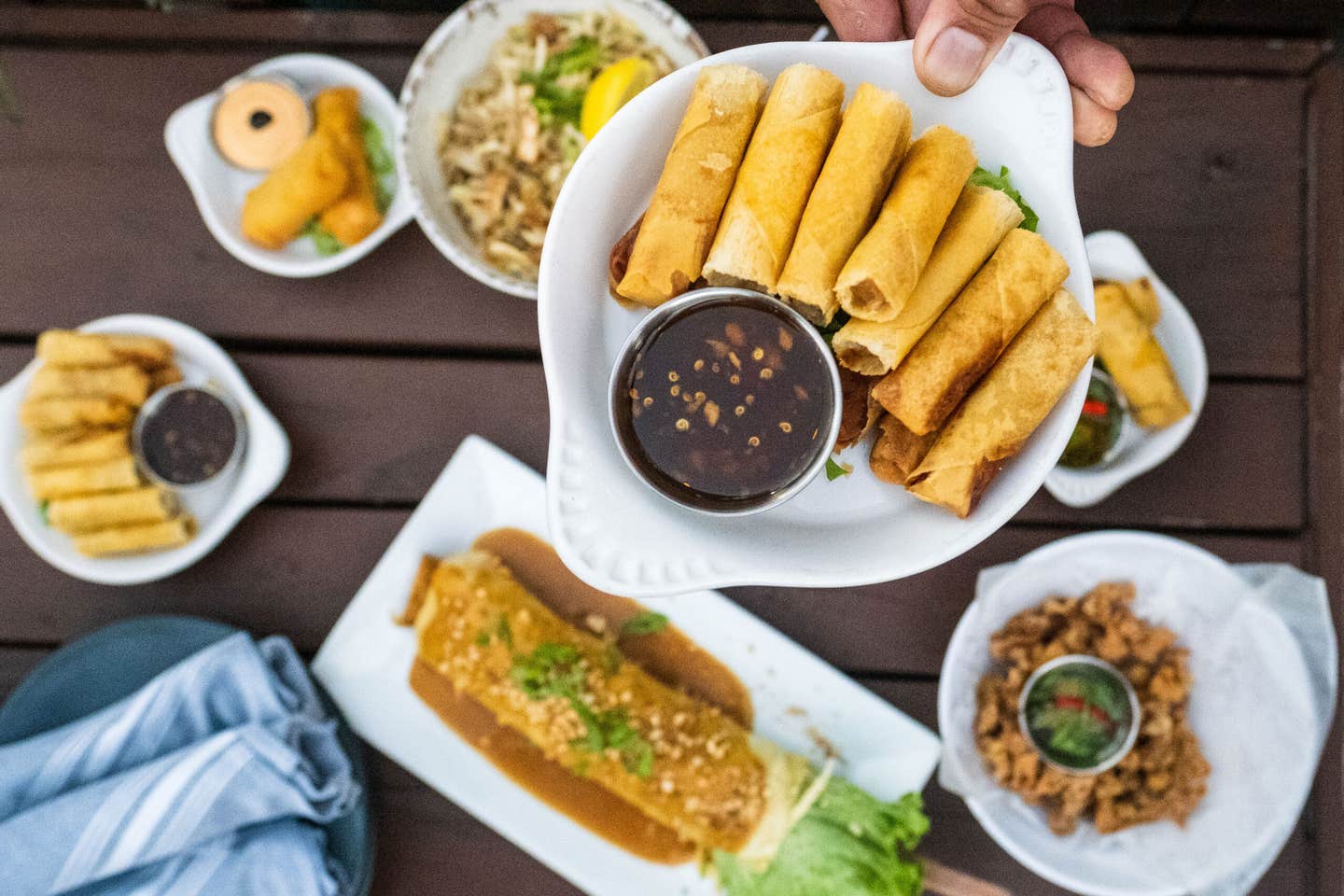
Filipino cuisine should feel approachable and even familiar for most Americans, Cuchapin adds. Many of its dishes have roots in other Asian cuisines: For example, lumpia (also referred to as lumpiang Shanghai), or crispy fried spring rolls, draw influence from their Chinese-style counterparts, a classic Lunar New Year dish symbolizing wealth and good fortune in Chinese culture. “Filipino cuisine in general, it’s just a melding of a whole bunch of different cultures, from Chinese, Indonesian, Malaysian, Indian,” Cuchapin explains, noting that he in fact perfected his rolling technique while working at Shu Shu’s Asian Cuisine, a Chinese restaurant in Austin. Spring rolls’ festive connotation lives on in lumpia, which Cuchapin calls “the ultimate party food”—most Filipino celebrations, including New Year’s, are bound to feature it.
Be More Pacific’s unique take on Filipino food likely makes the cuisine feel extra recognizable to American diners yet still wholly unexpected. The restaurant’s kare kare, a rich peanutty stew popular in the Philippines, swaps the more traditional oxtail for, in true Texas fashion, cuts of brisket. It also serves a special rendition of lumpia featuring imitation crab, cream cheese, and green onion; Cuchapin proudly calls the dish—which was inspired by the American Chinese dish crab rangoon—Gio’s. This Lunar New Year, he’ll be serving his signature lumpia alongside his Vietnamese American in-laws’ own version of spring rolls, also an auspicious dish in Vietnam’s new year celebrations.
I came to Texas in search of classic Lunar New Year dishes that migrated to America alongside the Asian immigrants cooking them. But what I discovered is that many of those dishes transformed along the journey, adapting to new inspirations, influences, and tastes as the people themselves grew and changed with each passing holiday. This is Houston, after all, where multiculturalism is woven into the fabric of the restaurant scene, and where cultural exchange and melding that organically lead to experimentation and evolution are welcomed, even celebrated. In this city, the culinary hybridization that has shaped centuries of cooking traditions and eating habits across Asia is happening in real time. On a bedrock of Southern hospitality, there exists a special “unity between those that are food lovers and those that are operators and owners,” Vu observes. “They come together and share ideas.”
Rather than define rigid borders of what a cuisine can and can’t be, Houston’s Asian dining scene simply wants cooks to serve the most delicious food that’s true to them. Especially if it means good fortune for all.
Recipe
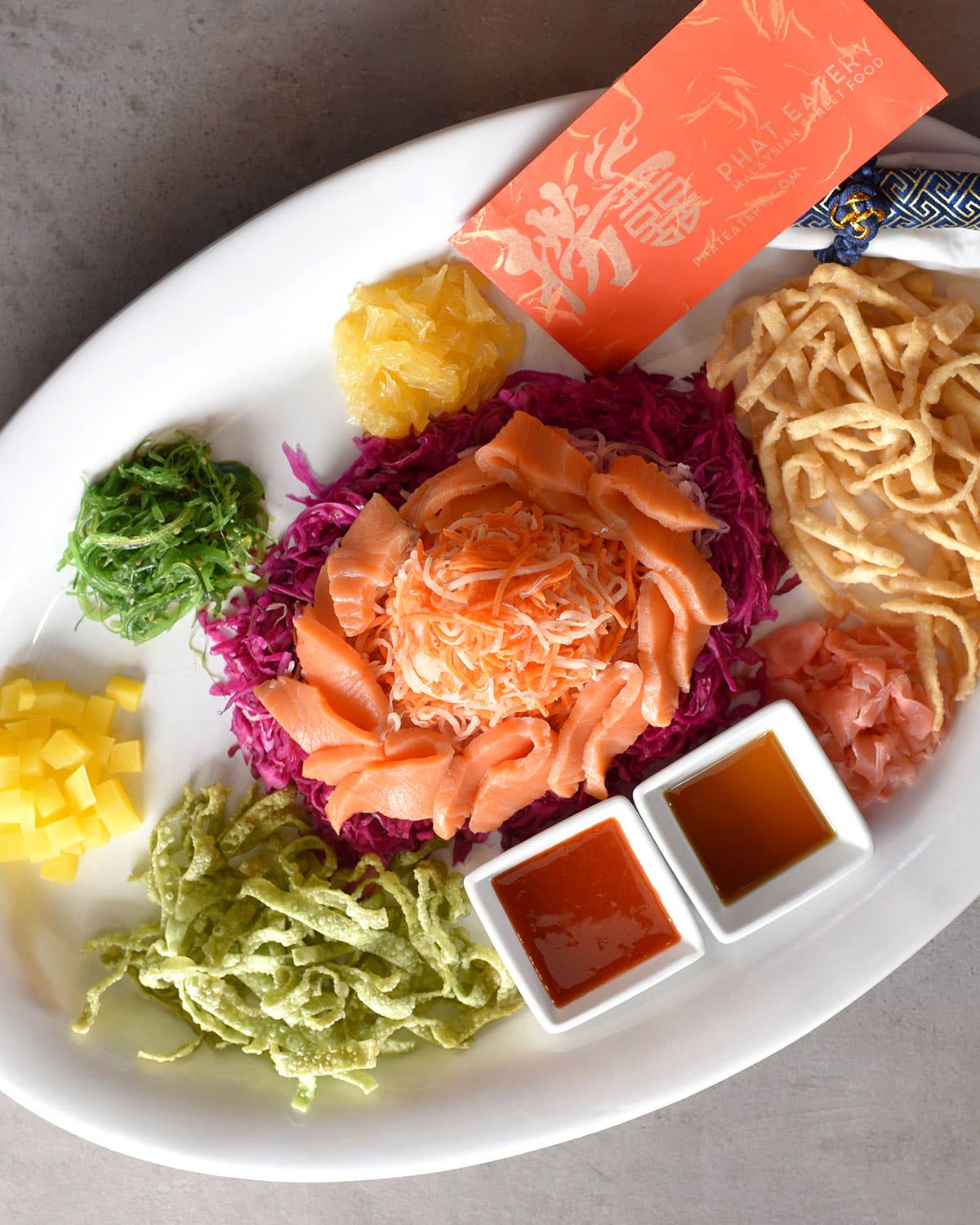
Keep Reading
Continue to Next Story










